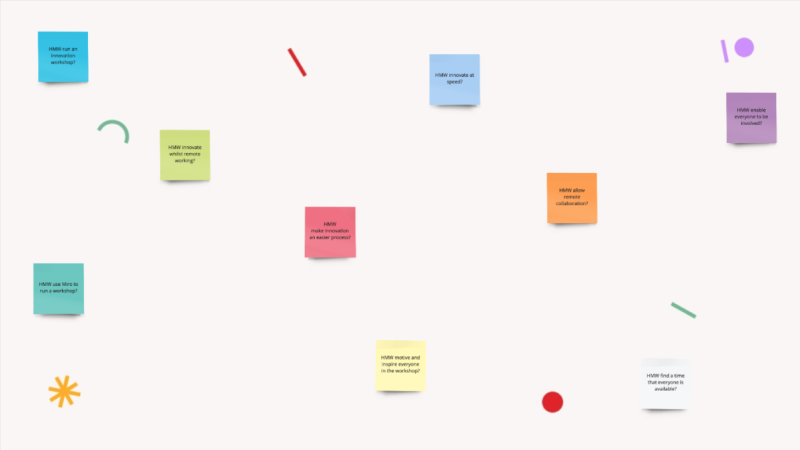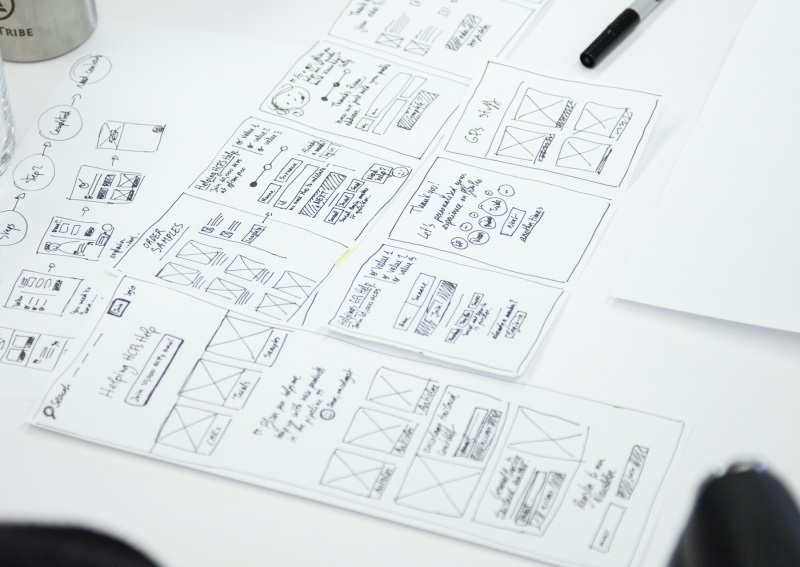
How can I gain business support for my digital product idea?
We explore the difficulty of kickstarting innovation projects in large organisations and how you can become an influencer in the workplace.

18 July 18
- Innovation
Have you ever had an idea so good that it kept you awake at night? You visualised how it would look, how it would perform, and how it would change your organisation for the better. But just days into sharing your idea with others, your enthusiasm disappeared.
Too many cooks drowned it, stalled it, or shut it down completely. It happens all the time. Innovation means change, and companies – regardless of size – sometimes struggle to cope with the change that’s needed to let ideas become tangible products.
We’ve seen it countless times: when meeting new clients, they tell us about how dejected they’ve become as many past projects were watered down or stopped due to stakeholders and different departments not being able to get on the same page.
These problems are common, leaving great ideas to go to waste or die on the vine while waiting for approvals from a distant business unit that was just hearing about you and your work for the first time. We’ve shaped our approach to find a way that works for everyone involved – innovation can’t wait. If you don’t do it, someone else will.
I recently attended The Pharma Social Media Conference in London and was lucky to attend a great session lead by Jannick Friis Larsen, from the Digital Customer Engagement team at Teva Pharmaceuticals. Jannick made some really excellent points, and while I won’t spoil the whole talk here, it inspired me to write some more about the issue of internal advocacy within large organisations and how it is vital in order to make sure your work sees the light of day and has a chance to make a difference for the organisation and its customers.
Why do digital projects get killed before they begin?
This isn’t a complicated problem, it’s a simple one of scale. If you work in an organisation with tens of thousands of employees scattered around the world, divided into business units competing for the same budgets (or sometimes engaged in a turf war), things can move pretty slowly. Turning around a big ship takes time, effort, money and most importantly influence.
It can be complicated further if you work in a heavily regulated industry like Finance, Insurance, Pharma or Energy. Not only do you need to convince your boss, their boss and probably a board of strangers that your idea is great, you’ll then need to do the same with your regulatory colleagues.
Regulatory boards or review panels are incentivised to keep your organisation on the right side of the industry regulation and the best way to do that is... to do nothing at all - you can’t get in trouble if you never try anything!
Taking all that into consideration; It’s no coincidence that some colleagues seem to get the best projects, the most investment and all the attention from senior leaders. They’re probably doing a better job of establishing themselves as a credible source of information - becoming an internal influencer within the business.

So how do I become an influencer?
There’s lots of different approaches here, but the core idea is to become a known authority within the business within a certain subset of topics that are relevant to your specific work. To take an example from Pharma, you might work in a multi-channel marketing capacity but you could have a specialist interest in HCP engagement and acquisition, or a passion for user experience.
Developing a special area of interest is just the beginning, as in order to truly get the best from this knowledge you need to be expert level at sharing it and bringing your colleagues on the journey with you. Being able to share knowledge (without being seen as a know-it-all) and giving the benefit of your special skills and experience within your immediate team is a start, before long you can grow your reach by sharing relevant news and articles along with your take on how that information is helpful for your business - being relevant is vital. Combine this with taking up internal speaking opportunities, running best practice webinar sessions, contributing content to internal social media platforms like Yammer and generally giving more of yourself and your knowledge wherever possible.
It’s not guaranteed to be a quick process, but before too long you can find yourself a credible advisor to the business in your particular niche - and you’ll need this credibility when you next come to seek support for a new product, or even a new feature for an existing product.
What else should I be doing?
1. Don’t waste time: bring an idea to life ASAP via a rapid prototype
It’s hard to unite teams to share excitement for something that doesn’t exist yet. This is why producing a working prototype can work wonders. We can build prototypes in as little as one day – all ready for you to place into your colleagues’ hands. The sooner this is done, the better.
Prototypes rapidly turn non-believers around and inject an immediate boost in enthusiasm and drive to help your team turn your idea into an engaging digital experience. Fake it until you make it!
2. Bring regulatory colleagues into your projects from the get-go
Nothing kills a project’s buzz faster than your regulator’s doubts and disagreements, so get them onboard from the start. Their experience will benefit you, and you can inform them of your strategy as you go.
This way, there are no ‘big surprises’ all coming their way at once, which usually alarms them and can stop your product in its tracks.
3. Never accept a ‘no’ without understanding why
We often hear about our clients’ fantastic plans: they send them to senior or regulatory colleagues, only to receive a cold ‘no’. But this verdict can be based on many things, not all of them down to compliance. By hearing them out (and sometimes pushing back) you’ll learn what’s a hard line and what’s an opinion and be able to use some of your specialist knowledge to help them understand the benefits of your plan.
4. Manage expectations within the business
Don’t make huge hard to deliver promises right from the start - work with colleagues to explain to them your product roadmap and agree sensible KPIs right from the very start (not just as you are about to launch). This will mean you have a great baseline definition of what success looks like, giving you a brilliant platform of data to use to shout about your success later on if you need to go back and ask for more support or investment for your next idea.
What does our approach achieve?
Graphite have been working as a partner to product teams within many different departments in large organisations. Augmenting teams with a range of specialist skills and approaches that help to get products shipped. We bring energy and drive to your product and can help negotiate tricky stakeholder management situations.
- Speed: get more done by investing your time and budget only into the things that we’ve proven will work.
- Impact: make a big difference to your customers’ lives – your original idea won’t be diluted by the end of the process.
- Respect: a more collaborative approach means better relationships with colleagues as you’ll get to know each other better, improving your relationship for future projects.
Have an idea that’s too good to keep quiet?
Share it with us at our next Experience Workshop. This is where we explore the opportunities in your idea, finding new ways to create more value for your customers.
Workshops are 3 hours long and can take place at either of our offices in Brighton and London, or we can come to you.
Book your Experience Workshop. We guarantee you’ll leave filled with new ideas to give more value to your customers.

